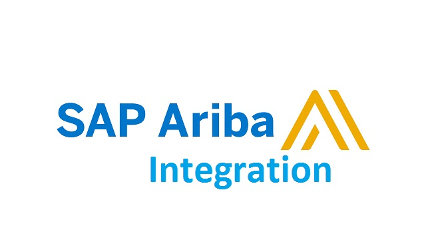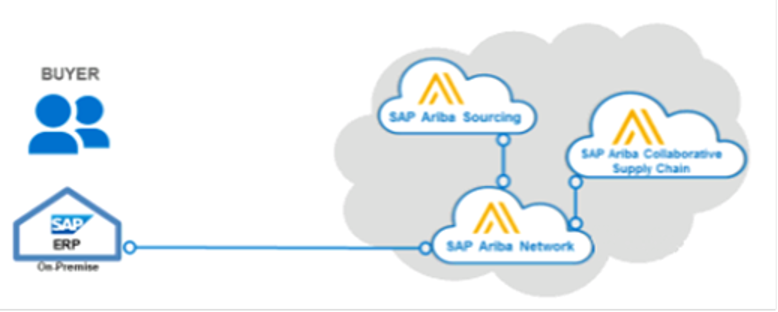Welcome to TutorialKart! In this tutorial, we will walk you through the Integration of SAP ECC with SAP Ariba, a vital step for businesses aiming to streamline procurement and supply chain processes. SAP Ariba, a leading cloud-based solution, connects buyers and suppliers, enabling efficient procurement operations.

By integrating SAP ECC with Ariba, organizations can automate workflows, enhance data accuracy, and improve collaboration. Whether you’re a beginner or a professional looking to solidify your understanding, this guide will provide a step-by-step approach to mastering the integration process using the Standard Ariba Network Adapter. Let’s dive in!

Integration of SAP Ariba with SAP ECC
SAP Ariba, a cloud-based procurement and supply chain solution, streamlines procurement processes by connecting buyers and suppliers. This guide focuses on integrating SAP ECC with SAP Ariba using Standard Ariba Network Adapter, which communicates via cXML.
Integration Approaches
- Standard Ariba Network Adapter: A pre-built adapter from Ariba enabling communication between SAP ECC and Ariba Network.
- Integration Tool Kit (ITK): A shell script-based tool that extracts data into
.csvfiles via triggered web services.
This guide will cover the Standard Ariba Network Adapter approach.
Steps for Integration
1. Setting Up SAP PI (Process Integration)
Download and Prepare Adapter Package
- Log in to connect.ariba.com.
- Navigate to Download Software and agree to the terms.
- Download the latest adapter version (e.g.,
AribaNetworkAdapterSAPNetweaver_vCI_6.zip) and extract its contents.
Deploy the Adapter
- Deploy the
.scafile on the PI J2EE engine using JSPM or SUM tools. - Extract
FileStruct.zipand copy thexmlandCanonicalCatalog.xmlfiles to<Root>/etc/catalog/.
Import Software Component Definitions
- Import
SoftwareCatalog.zipinto the System Landscape Directory (SLD) to ensure recognition of Ariba components.
Install Security Certificates
- Obtain certificates from Ariba.
- Import them into the PI server’s keystore and TrustedCAs view in NetWeaver Administrator (NWA).
2. Configuring SAP SLD and ESR
Technical System
- Create a technical system (e.g.,
TS_ASN) in SLD. - Associate the Ariba product and component definitions with this system.
Business System
- Create a business system (e.g.,
BS_ASN) and link it to the technical system. - Verify product and component associations (e.g.,
ARIBA_SUPPLIER_CONN_ADAPTER).
3. Integration Builder Configuration
Transfer Integration Scenario
- Transfer the relevant integration scenario (e.g.,
AR_QuoteRequest_Receive) from Enterprise Services Repository (ESR) to the Integration Directory.
Assign Components
- Map communication components to SAP ECC (
BS_SAPR3) and Ariba (BS_ASN). - Configure communication channels for sender and receiver systems.
Communication Channel Setup
- Use pre-built templates to define communication channels.
- Assign parameters like system type, outbound request type (
QuoteRequest), and credentials.
Activate Connections
- Activate all connections in the Integration Directory.
- Test to ensure seamless communication.
4. Fine-Tuning Communication Channels
Sender Channel
- Define specific parameters for SAP ECC’s outbound requests.
Receiver Channel
- Align configurations with Ariba’s inbound requests and endpoints.
Key Configuration Parameters
| Parameter | Description |
|---|---|
| System Type | Module-specific value, e.g., Ariba SN Buyer. |
| Outbound Request | For RFQ scenarios, use QuoteRequest. |
| Inbound Request | For inbound PO, use QuoteMessage. |
| Credential | Unique client-specific Ariba Sourcing Site ID. |
| Credential Mode | Shared Secret or Client Certificate. |
| End Point ID | Provided by Ariba to configure network endpoints. |
| AN ID | Use AN01000000001, common for all Ariba clients. |
| GetProfile URL | Set to https://service.ariba.com/service/transaction/cxml.asp. |
| DTD | Scenario-specific value, e.g., Quote.dtd for RFQ. |
Testing and Validation
- Activate all configured components.
- Perform end-to-end testing, including:
- Request for Quotation (RFQ) creation in ECC.
- Sourcing request verification in Ariba.
- Validation of communication logs in SAP PI.
Conclusion
This Ariba Tutorial serves as a beginner-friendly guide to SAP Ariba integration. By following these steps, businesses can streamline procurement processes, enhance operational efficiency, and improve supplier collaboration.
